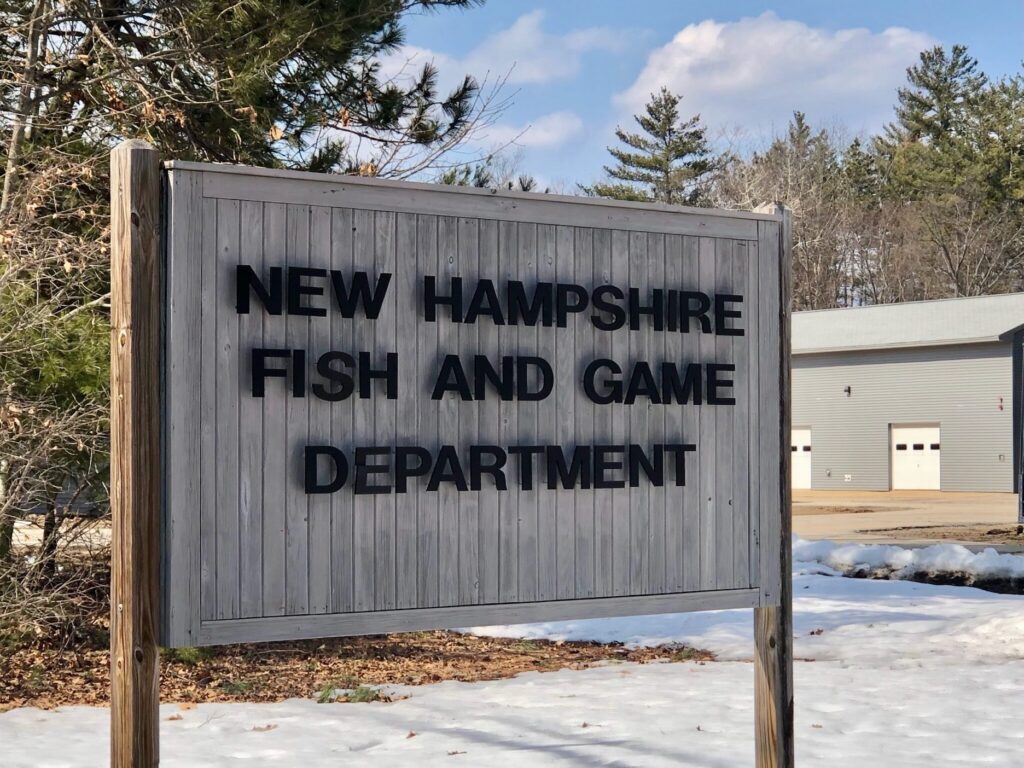The spiny water flea was found in “the Broads” in Gilford, the deepest section of Lake Winnipesaukee, according to Fish and Game. (Hadley Barndollar | New Hampshire Bulletin)
A 38-year-old hiker who injured her leg and could not continue on. A 56-year-old man who had a medical emergency on a remote trail. A 70-year-old who slipped and injured her ankle while hiking.
These are just a handful of the hikers who needed the help of Fish and Game conservation officers and other rescuers this summer. How to better support the dozens of costly, laborious missions is one of many questions under consideration by a four-lawmaker committee studying the department’s financial woes.
Part of Fish and Game’s problem, some said, is advertising. The lawmakers and various stakeholders testifying before them are searching for ways to better promote Fish and Game’s voluntary Hike Safe cards, which help offset the cost of the search-and-rescue efforts. This step, though, would be only one piece of addressing the department’s funding strains.
“I think largely New Hampshire has a branding problem. … Who are we, right?” said Tyler Ray, founder and director of Granite Outdoor Alliance, a nonprofit representing 120 outdoor businesses, to the committee Thursday. “… New Hampshire has this ruggedness, this sense of individualism that I think we could celebrate, and this Hike Safe card is a differentiator.”
For $25 a pop – or $35 for a family, including spouses and children and stepchildren under 18 – those recreating outdoors get some peace of mind that, should they find themselves needing to be rescued, they won’t be liable for the costs. (Unless, Fish and Game warns on its website, “they are deemed to be reckless or to have intentionally created a situation requiring an emergency response.”) Hunting and fishing licenses and current registration for off-highway recreational vehicles, snowmobiles, and boats also offer some liability protections.
The cards expire Dec. 31 each year and are valid only in New Hampshire. Their full cost, minus a small transaction fee, goes to the search-and-rescue fund, according to the department. In 2015, when the cards were first launched, Fish and Game sold 2,846, raking in roughly $74,800, according to Jessica Whelehan, a licensing supervisor with the department. Last year, the department sold 14,539, totaling over $371,000.
Fish and Game performs about 180 search-and-rescue missions a year, said Col. Kevin Jordan, the department’s law enforcement chief, at an August study committee meeting. They come at a steep price, he said: an annual total of about $300,000 to $400,000, plus the physical toll the missions exact on officers. Despite the fact that his team covers the entire state, Jordan said, there are only 50 of them – smaller than the size of Concord’s police department.
The cost of the missions is significant in a department under financial strain from what officials say has been years of increased responsibilities without the funds to match them. In the late 1800s, Fish and Game staffed a few fishing commissioners and “detectives” who enforced fish and wildlife rules, according to the department. Over the decades, those tasks grew to include hatcheries, search and rescues, snowmobile and OHRV enforcement, and more, compounded with a growing population. The department gets only a tiny sliver of its funds from the general fund, but Ray Green, chair of the Fish and Game Commission, told lawmakers in August that needs to change for the department to survive.
Safety is part of the department’s drive. Fish and Game worked with the White Mountain National Forest to develop a joint program called “hikeSafe” focused on hiker and mountain safety education. They have a hiker safety code that urges hikers to have proper equipment and knowledge, stick together, prepare for emergencies, and more.
Ray, the alliance head, pointed out to the committee that the White Mountain National Forest is one of the most visited national forests in the country. “To me, that said we have a marketing problem,” he said. He proposed that the cards should appear on his group’s website, all government agency websites, and have marketing dollars put behind them.
“It has incredible potential,” he said of the cards.
Doing a better job of promoting the cards is an issue that has been discussed for years. In 2018, a commission to study the efficiency and effectiveness of the department’s operations made a long list of recommendations. Among them: “Increase the promotion/marketing of the Hike Safe card.” The commission encouraged Fish and Game to consider rebranding the card so that more people would purchase it.
“While the card has been successful in bringing in additional revenue for the Department,” the commission wrote, “there seems to be many hikers and others who participate in some kind of outdoor recreation activity who do not buy them.”
Rick Van de Poll, who sat on the commission as an outdoor recreation representative, told lawmakers the commission thought it was important for Fish and Game to further promote the projects it already has, such as the cards.
“Everybody was in support of getting the word out to greater numbers of people for a Hike Safe card,” Van de Poll said.
The lawmakers on the committee, created by House Bill 542, have until November to submit their findings and recommendations on the department’s funding and partnerships to top state officials. They planned their next public meeting for Sept. 26 at the State House.

